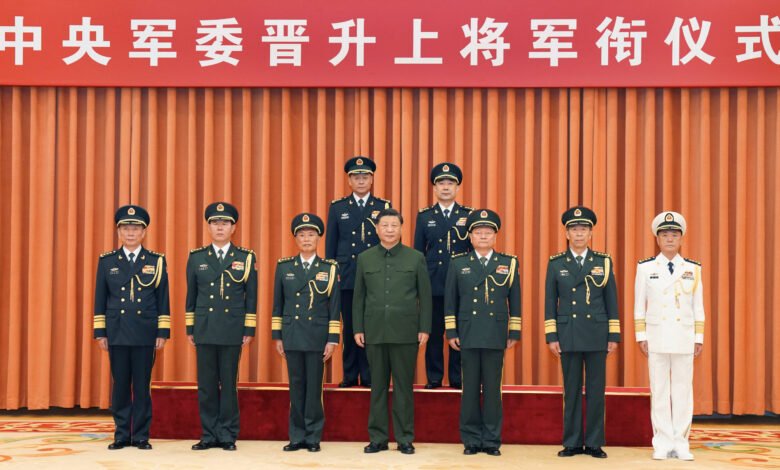
Christchurch: As part of its modernisation effort of the People’s Liberation Army (PLA), China has disbanded and replaced its Strategic Support Force, a pivotal component of the PLA. The Strategic Support Force, or SSF, was created on December 31, 2015. It existed for a little more than eight years.
After China dissolved the SSF on April 19, it established an Information Support Force, with President Xi Jinping present at its investiture ceremony in Beijing the same day. Its first commander is Lt Gen Bi Yi, a former deputy commander of the SSF. The Information Support Force is directly subordinate to the Central Military Commission, the top political party organ that oversees China’s armed forces.
Senior Col Wu Qian, a Defence Ministry spokesperson, said the change is part of “building a strong military, and a strategic step to establish a new system of services and arms and improve the modern military force structure.”
He said the Information Support Force underpins “coordinated development and application of network information systems.” This suggests it is responsible for command and control, information security, and intelligence dissemination.
He also said the move would have “profound and far-reaching significance” on PLA modernisation. However, Brendan Mulvaney, the director of the US Air Force’s China Aerospace Studies Institute, said it’s unlikely to be “as big of a shift as the 2015-2016 reforms,” which overhauled the PLA.
The military considers the information domain as important as the four traditional air, land, sea and space domains. The PLA now has three nascent arms — the Information Support Force, Cyberspace Force and Aerospace Force. It appears the latter two were existing SSF departments that China renamed.
After the shakeup, the PLA’s new organisation features four services and four arms: the existing PLA Army, Navy, Air Force and Rocket Force services, while the three previously mentioned arms sit alongside a fourth, the incumbent Joint Logistics Support Force. The Cyberspace Force will subsume the responsibilities of the SSF’s former Network Systems Department, whose mandate was offensive and defensive cyber operations.
Indeed, the Defence Ministry described the Cyberspace Force’s role as “reinforcing national cyber border defence, promptly detecting and countering network intrusions and maintaining national cyber sovereignty and information security.”
The Aerospace Force will take on the charge of the SSF’s Space Systems Department, meaning it will supervise space operations and space launches. Wu said the force will “strengthen the capacity to safely enter, exit and openly use space.”
The ministry said that “as circumstances and tasks evolve, we will continue to refine the modern military force structure.”
Xi has repeatedly urged the PLA to do two things: modernize its readiness structure for high-tech combat, and to loyally follow party diktats. He has now ordered the Information Support Force to “resolutely obey the party’s command and make sure it stays absolutely loyal, pure and reliable.”















